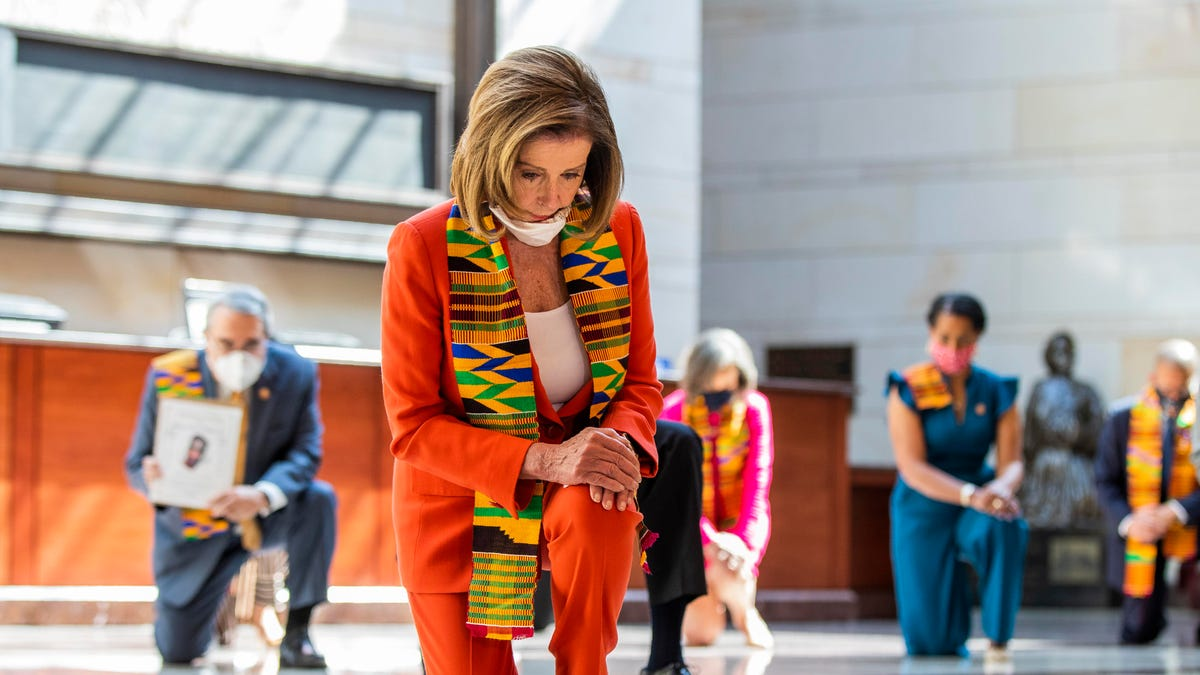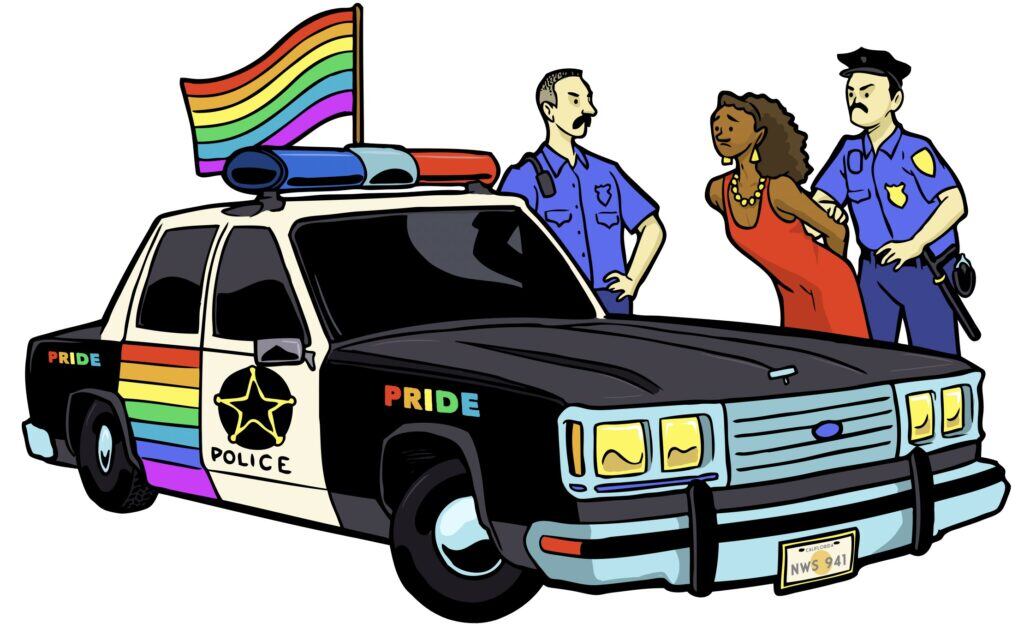
Against Liberalism
Luke Savage’s The Dead Center exposes the hypocritical pseudo-progressivism that needs to be defeated.
Once I was young and impulsive
I wore every conceivable pin
Even went to the socialist meetings
Learned all the old union hymns
But I’ve grown older and wiser
And that’s why I’m turning you in
So love me, love me, love me, I’m a liberalPhil Ochs
“Liberalism” is one of the most frustrating “isms” to discuss, because the meaning is mushy. In Why Liberalism Works, free-market economist Deirdre McCloskey speaks of liberalism as essentially synonymous with capitalistic libertarianism, while the great liberal thinkers John Stuart Mill and John Rawls were borderline socialists in their economic views. Abstract values like “individual liberty” are often cited as central to liberalism, but since everyone from Eugene Debs to Rand Paul has claimed to believe in “individual liberty,” sorting out who the liberals are can be tricky business.
Luke Savage’s new essay collection The Dead Center: Reflections on Liberalism and Democracy After the End of History concerns itself with a strain of liberalism we might call “Ochsian” liberalism.1 We can think of this liberalism as “the thing Phil Ochs was attacking in the song ‘Love Me, I’m a Liberal.’” Singing about the liberal circa 1966, Ochs describes them as someone who:
- Cried when Medgar Evers and JFK were shot, but thought Malcolm X had it coming
- Goes to civil rights rallies and thinks people in Mississippi should be ashamed of themselves, but reacts badly to being asked to bus their children
- Reads the New Republic and Nation
- Votes Democratic
- Goes to Pete Seeger concerts
- Says they were once a “young and impulsive” pro-labor socialist but has grown “older and wiser”
- Will happily call the cops on you
For Ochs, then, the liberal is someone who has superficially socially progressive values, combined with a reluctance to actually pursue meaningful social change—especially when that change would involve risk to one’s own status and position. They are, as Ochs says, “ten degrees to the left of center in good times, ten degrees to the right of center if it affects them personally.” This type of liberal is also the target of Martin Luther King, Jr.’s famous essay “Letter from Birmingham Jail,” with its biting condemnation of the White Moderate as a more difficult (and annoying) impediment to progress than the outright racist reactionary. For King, it was precisely because the moderate claimed to sympathize with progressive goals that they were such an impediment; at every stage, they would oppose change in the name of supporting it.

Savage’s book is a useful field guide to identifying liberalism in the wild in 2022, and helps us better refine our understanding of the difference between “liberal” and “left” politics. The Dead Center’s essays discuss figures like Pete Buttigieg, Beto O’Rourke, James Carville, Jon Stewart, Justin Trudeau, David Plouffe, Keir Starmer, Barack Obama, and Amy Klobuchar, showing what it is about each one’s politics that make them distinctively “liberal.” All of these figures follow Savage’s formula for the liberal style:
To be a liberal, then, is to master the art of explaining why, regrettable as it may be, things either cannot change or cannot change at the speed demanded by those of us on the left. This argument comes in many forms, but invariably employs the same basic formula: namely, an expressed affinity for a progressive cause or concern tempered by a series of stated obstacles that make realizing it difficult, impossible, or unrealistic—even (or perhaps, especially) when a liberal administration is in power.
Savage shows us how this works in different cases. Starmer, for instance (the leader of the British Labour Party), has expressed a vague commitment to change (when asked what he intended to change, he said “the things that need changing”) but when presented with an actual “Which side are you on?” test in the form of a railroad strike, Starmer made it clear he would punish Labour politicians who sided with the striking workers. (A Guardian writer, agreeing with Starmer, calls it “emotional Trotskyism” to believe that the job of a Labour party is to support workers when they strike.)
Savage points out that for Ochsian liberals, being “realistic” ends up meaning: telling us we can’t actually accomplish any progressive goals. It has gotten to the point, he says, where “‘realism’ has become an identity unto itself, unmoored from any programmatic orientation toward the future or sustained effort to bring about significant change.” Savage shows how this works by looking at the politics of Canada and blue states, places where liberals are actually in charge and no longer have the excuse of having their goals thwarted by Republicans. By looking at what liberals do when they do not have political constraints, we can see if they are indeed motivated by a realistic recognition of the limits of the politically possible, or whether they are, as Ochs alleged, ultimately just shy about doing anything that could raise their own taxes or that smacked of “revolution.” Savage observes that “even in solidly blue states where Democrats face none of the institutional impediments that confront them in Washington, DC, robust progressive legislative agendas are rare.” (Savage and I also once looked at what Barack Obama did when he left office, when he was free to speak his mind without fear of political repercussions, to see whether he was better classified as a “realistic progressive” or a conservatively-inclined neoliberal.) Savage concludes that “what is generally called liberalism is functionally small-c conservatism,” and while the right may hysterically label Barack Obama and Justin Trudeau radical leftist socialists, the truth is that these men pose zero threat to the ruling class. (That is not to say that there is no difference between them and the right, however. American Republicans embrace a zealous form of theocratic nationalism that is downright frightening.)
The conservative policies of liberalism (helping the rich avoid taxes, declining to provide living wages, opposing universal free healthcare) are combined with a strong rhetorical commitment to egalitarianism, anti-racism, feminism, etc. In Ochs’ song, the anti-busing liberal nevertheless boasts about their support for Black film stars and musicians like Sidney Poitier and Harry Belafonte. Savage writes that the disjunction between what liberals say they support and what they actually do has never been greater:
On issues as varied as the environment, racial oppression, and immigrant rights, the culture of liberalism has rarely been so suffused with a language of moral urgency and social justice; as an institutional and ideological presence in American life, its politics have rarely been so unambitious or shy of confrontation.
Take, for instance, the photograph of congressional Democrats taking a knee while wearing kente cloth, a gesture meant to signal opposition to racist policing:

These are the same Democrats who this year have ditched their commitment to police reform because it’s a politically hard fight. Liberalism, then, is the politics that puts pride flags on police cars or gives us Pepsi commercials with Black Lives Matter themes, but will not actually redress the racial wealth gap or meaningfully curb the impunity of our militarized police. Savage writes:
It is a politics that offers the ephemeral sensation of change rather than the actual thing. In place of a coherent program, it offers chirpy sound bites and superficially progressive language designed to tranquilize and comfort rather than mobilize or transform. Scratching its surface, we find not the youthful energy, dynamism, or innovation it claims for itself, but rather an all-too conventional and elitist style of leadership.
That “elitist” style of leadership can be studied closely through viewings of Aaron Sorkin’s The West Wing, a favorite of young Democrats in Washington during the Obama years. Savage’s essay on the show discusses how it presents a fantasy in which well-educated technocrats who are smart and witty get to preside over the country without ever attempting the difficult work of implementing major policy change. It is telling, and depressing, he says, that young wonks see the ineffectual meritocrats of the West Wing as role models.

Savage takes us back to the 2020 Democratic primary to showcase all the vapid liberals who attempted to present themselves as new Obamas. His descriptions of the candidates are deeply satisfying. He nails Joe Biden, who ran as an “avuncular, slightly potty-mouthed but ultimately loveable good guy who wants things to get better in a non-threatening sort of way.” Biden’s “Washington is one of elite camaraderie and locker room fraternity far exceeding anything ever dreamt up by Aaron Sorkin: an ancien régime to be preserved through endless backroom handshakes and magnanimous compromises between fundamentally decent people, be they milquetoast liberals, right-wing conservatives, or former segregationists.” Of Pete Buttigieg, he writes: “Boasting an impeccable resume, boyishly unctuous grin, and no discernible agenda or program to speak of, the mayor of South Bend, Indiana was suddenly everywhere. … Buttigieg’s candidacy is thus a dream for the kinds of consultants and strategists who see politics as the art of ticking off various cultural and demographic boxes and then building a compelling story arc around them.” (Indeed, Buttigieg’s own argument for his candidacy was that he had an optimal “alignment of attributes”—from the heartland, military veteran, gay, etc.) Savage is withering about a media that treats elections as personality contests, “infotainment spectacle wherein various candidates compete on the basis of neatly taxonimizable personal attributes—like professional athletes or fantasy characters rendered with +7 electability and +15 Midwesternness.”
Of Beto, Buttigieg, and Biden, he writes:
All three enjoy big political and media constituencies, both in the Beltway and its adjacent bases of power and influence; all three have been boosted by party mandarins as potential antidotes to the insurgent populist current represented by (among other things) the surging candidacy of Bernie Sanders; all three have been the subject of tremendous media buzz despite saying very little of substance. Each is campaigning based on personal signifiers rather than any actual program they hope to realize in office, appealing above all else to people’s desire for a return to normalcy during the Trump era… Beto, Buttigieg, and Biden—their variations notwithstanding—are all different reflections of the same, largely postpolitical strand of liberalism, one that has so thoroughly acceded to the logic of the market that it no longer recognizes the difference between branding and campaigning and is stubbornly uninterested in having it explained.
(And let us not forget Amy Klobuchar, whose “principal political message involves telling people wracked by angst and economic insecurity that they can’t and shouldn’t expect anything better,” and who earned praise from the media for being the rare politician “willing to tell her constituents no.”)

Savage is clear on the alternative to Ochsian liberalism: have a real program, don’t be a hypocrite, and be willing to fight for your values. His model is the Bernie Sanders campaign, which demonstrated the virtue of “mobilizing around ambitious, popular policies and openly naming the forces and interests that stand in their way.” By contrast, the liberals are “ not only unable to offer answers but congenitally unable to even imagine what they would be.” What we need is a politics that acts as if it actually believes in the things that liberals say they believe in until they are put to the test. (A great deal more detail on the obvious alternative to liberalism can be found in my book Why You Should Be a Socialist.)
What is liberalism? It’s a police car with a pride flag. It’s using Black Lives Matter to advertise Pepsi. It’s declaring Donald Trump an existential threat to democracy and then voting for his military budget. It’s insisting climate change is an emergency while boasting about the expansion of fossil fuel production. It’s claiming the fight for abortion rights is critical and then supporting anti-abortion candidates who are embedded in the party establishment.
Savage warns, helpfully, that not all critiques of liberalism are equal, and “unless grounded in materialist analysis and undergirded by firm egalitarian commitments, anti-liberal critiques call all-too easily slide into shallow contrarianism or various genres of ersatz iconoclasm that are really just conservatism by another name.” We would do well to bear in mind that criticism is easy, and that even as we lament the dreadful leadership of people like Nancy Pelosi and Joe Biden, we must be figuring out what a new and better politics will be like. Whatever that is, it must avoid the loathsome tendencies of Phil Och’s liberal.
Note: I co-wrote one of the essays that are collected in the book, and edited a few of them for Current Affairs. ↩




